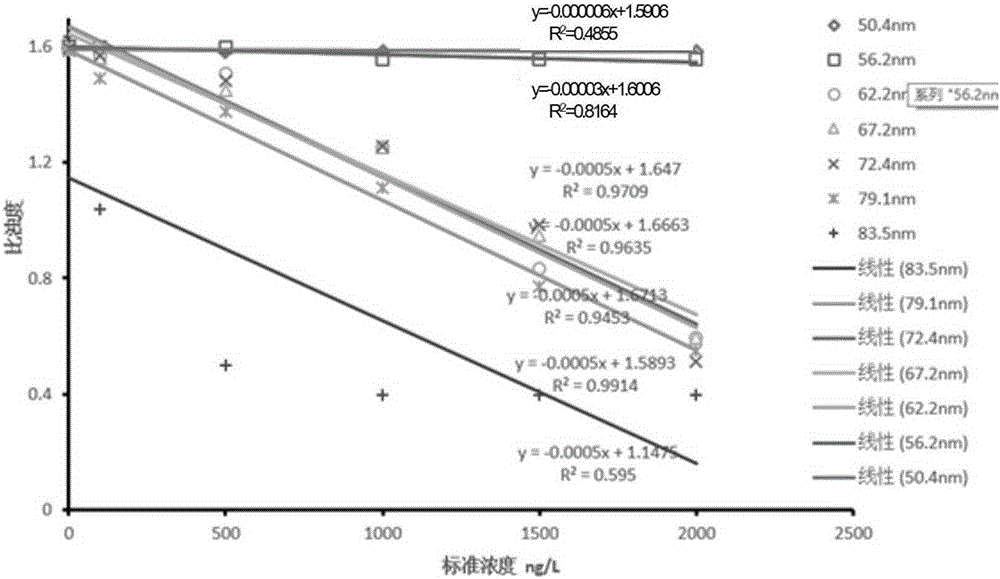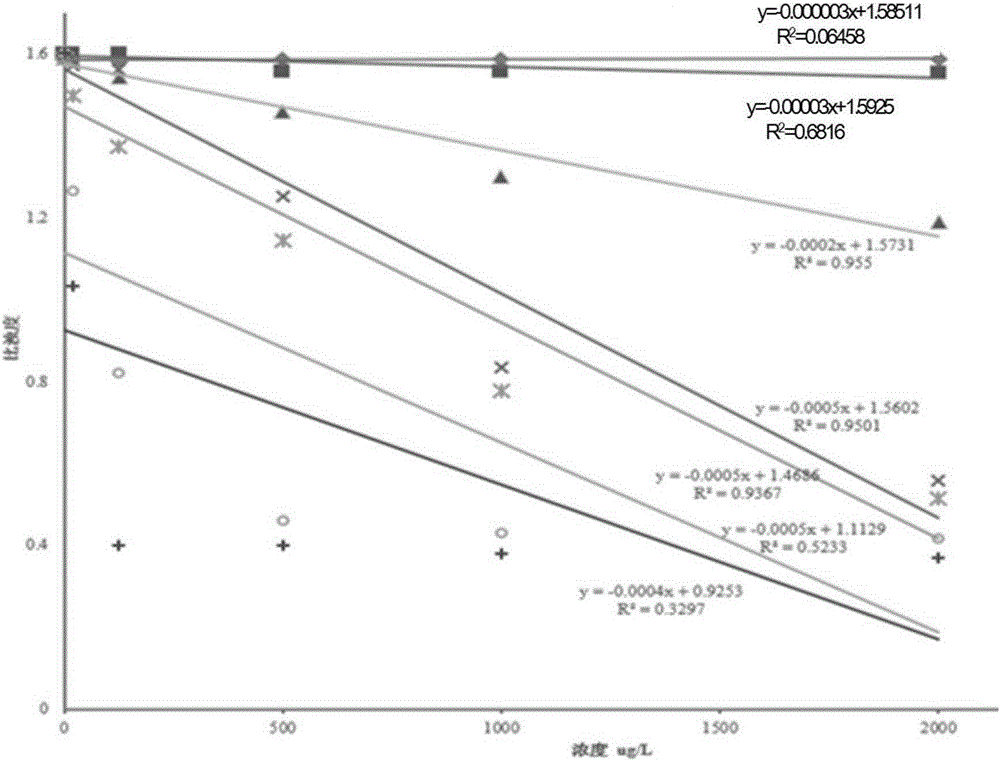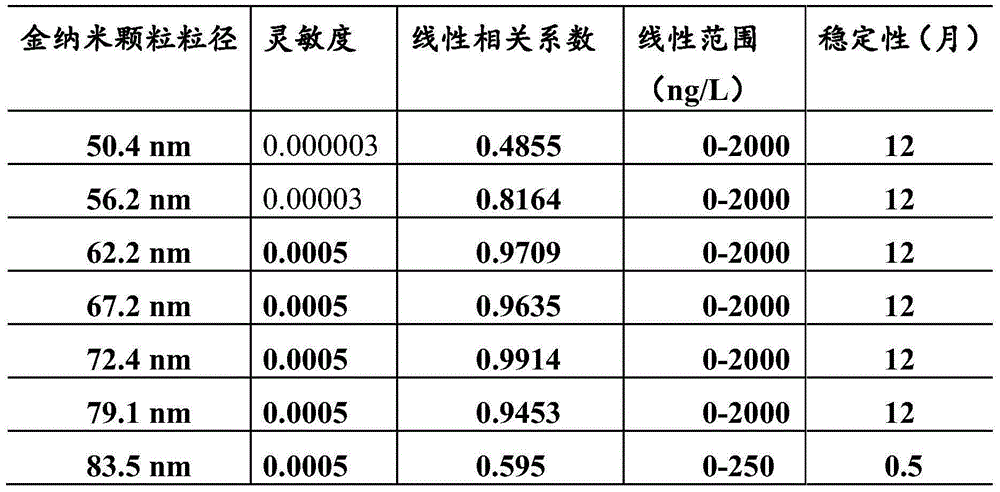Hepatitis C virus core antigen detection kit and its preparation
A hepatitis C virus and core antigen technology, applied in the field of hepatitis C virus core antigen detection kits, can solve the problems of inappropriateness, unsatisfaction, cumbersome operation, etc., so as to prolong the service life, increase market competitiveness, and reduce manufacturing costs. cost effect
- Summary
- Abstract
- Description
- Claims
- Application Information
AI Technical Summary
Problems solved by technology
Method used
Image
Examples
Embodiment 1
[0034] The preparation of reagent R2 in this example is divided into three steps. Firstly, a colloidal gold solution is prepared, then the antibody is coupled to the gold nanoparticles, and finally it is mixed with buffer salt, coagulant and preservative to form a complete system.
[0035] The specific process is as follows:
[0036] 1) The preparation of colloidal gold of 50nm is as follows:
[0037] Put a magnetic stirrer in a cleaned 1000ml round bottom flask, and add 500ml of ultrapure water;
[0038] Add 5ml concentration and be 1% (w / v) chloroauric acid, stir at about 600rpm at a high speed, and be heated to solution boiling, be that 1% (w / v) sodium citrate solution is added in the flask rapidly then with 6ml concentration, keep Heating and stirring vigorously for 10 minutes, the color of the solution first turns black, and then gradually turns purple;
[0039] Turn off the heating switch and continue to stir for 10 minutes, then stop stirring and cool to room temperat...
Embodiment 2
[0058] The only difference between Example 2 and Example 1 is that the particle size of the colloidal gold particles prepared in Example 2 is 55 nm by adjusting the amount of reducing agent added.
[0059] Prepare 55nm particles and add reducing agent 1% sodium citrate to 5.6ml. The obtained colloidal gold particles were observed by transmission electron microscope, and the diameter was about 56.2±1.5nm.
Embodiment 3
[0061] The only difference between Example 3 and Example 1 is that the particle size of the colloidal gold particles prepared in Example 3 is 62.2 nm by adjusting the amount of reducing agent added.
[0062] Prepare 62.2nm particles and add reducing agent 1% sodium citrate to make 5.4ml. The obtained colloidal gold particles were observed by transmission electron microscope, and the diameter was about 62.2±1.1nm.
PUM
| Property | Measurement | Unit |
|---|---|---|
| particle diameter | aaaaa | aaaaa |
| particle diameter | aaaaa | aaaaa |
| diameter | aaaaa | aaaaa |
Abstract
Description
Claims
Application Information
 Login to View More
Login to View More - R&D
- Intellectual Property
- Life Sciences
- Materials
- Tech Scout
- Unparalleled Data Quality
- Higher Quality Content
- 60% Fewer Hallucinations
Browse by: Latest US Patents, China's latest patents, Technical Efficacy Thesaurus, Application Domain, Technology Topic, Popular Technical Reports.
© 2025 PatSnap. All rights reserved.Legal|Privacy policy|Modern Slavery Act Transparency Statement|Sitemap|About US| Contact US: help@patsnap.com



